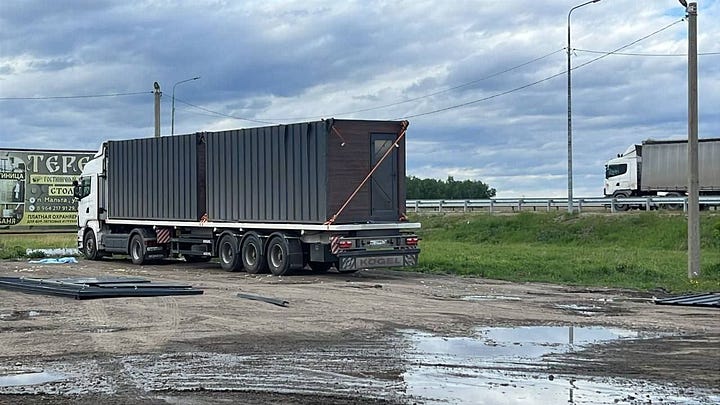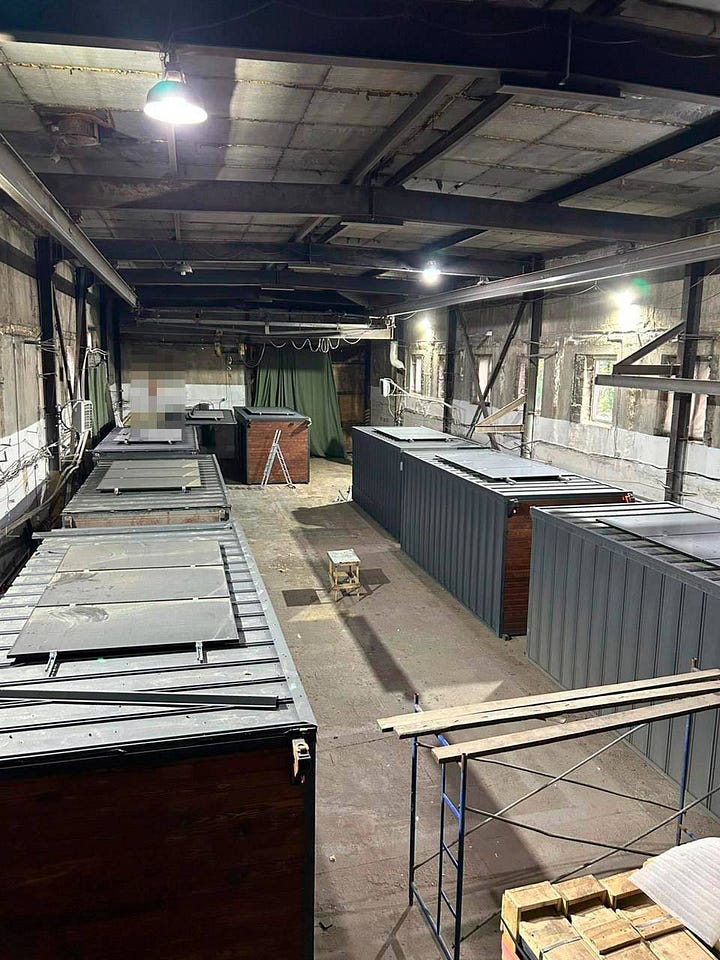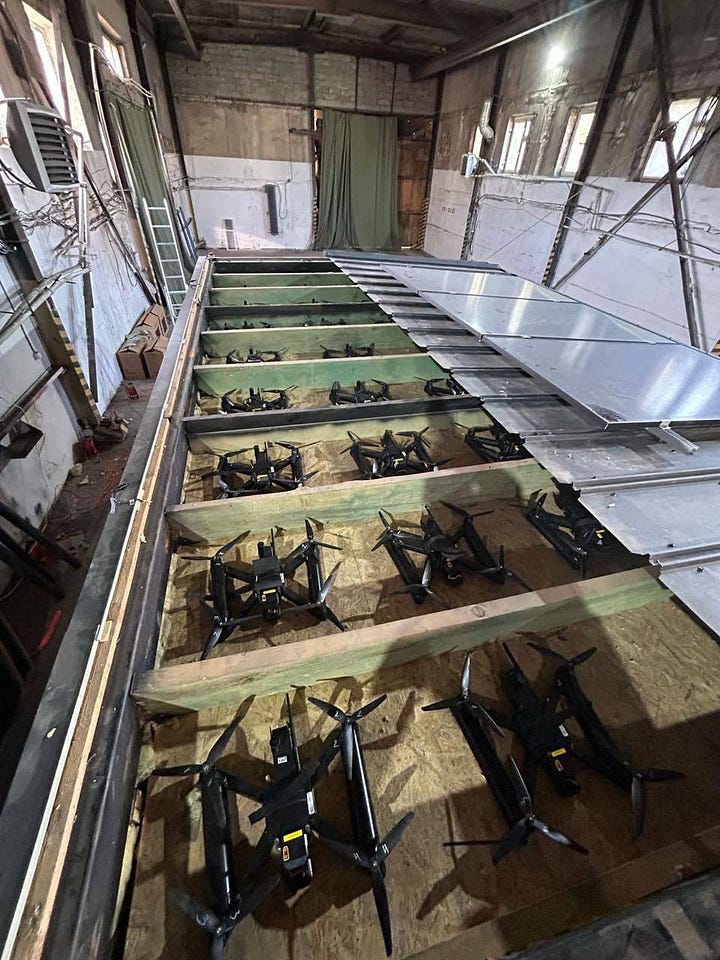Operation Spiderweb: Ukraine inflicts catastrophic damage to Russia's Nuclear Triad strategic bomber fleet across 3 timezones
Over 40 aircraft used by Russia to bombard Ukrainian cities with 2000 cruise missiles over the past 3 years were hit by 117 trojan attack drones transported next to the airfields in wooden containers.
On June 1, 2025, Ukraine's Security Service (SBU) launched a meticulously planned operation codenamed "Spiderweb," targeting Russian strategic bombers across four airbases—Belaya, Dyagilevo, Ivanovo Severny, and Olenya—spanning 4,000 kilometers from Murmansk to Irkutsk. This operation, which took 1.5 years to prepare under the direct supervision of Ukrainian President Volodymyr Zelensky and kept secret even from Ukraine’s allies, marked an unprecedented novel tactic of smuggling 150 drones into Russia.
These drones were concealed within wooden containers mimicking houses on truck beds and simultaneously activated via Russian cellular networks.




The drones launched a coordinated attack that struck over 40 Russian aircraft, including critical assets like the A-50 early warning and control aircraft, Tu-95, and Tu-22 M3 bombers. The damage inflicted was extensive, with estimates suggesting a financial impact exceeding $7 billion, but even more critically severely undermining Russia's strategic aviation capabilities because Russia cannot replace the lost aircraft.
The operation's success was partly due to the SBU's ability to transport the drones covertly, using mobile trucks with remotely operable roofs to deploy the drones at the opportune moment. In Irkutsk region, drones exited the parked container one after another, adjacent to the Belaya airbase as onlookers watched helplessly.
However, a fifth target, Ukrainka Air Base in the Amur region, was compromised when the truck carrying the drones caught fire and exploded.
The SBU operatives involved in "Operation Spiderweb" had already departed Russia before the attacks commenced, ensuring their safety and the operation's secrecy. This preemptive evacuation was crucial, as Russian authorities later discovered a warehouse in Chelyabinsk where the drones were loaded into containers but the SBU had vacated the premises in time.

The operation's impact was not just military but also psychological, aiming to dismantle the arrogance of the Russian war machine. This attack was part of a broader pattern of Ukrainian drone strikes on Russian military infrastructure, following previous successful operations like those on Engels air base in December 2022 and January 2025, which had already demonstrated Ukraine's growing capability in drone warfare.
The "Spiderweb" operation represents Ukraine's most damaging drone strike to date, potentially altering the dynamics of the conflict. It underscores the strategic shift towards asymmetric warfare, where smaller, technologically advanced forces can inflict significant damage on larger, more conventional armies. The operation's success could have long-term implications for Russian military strategy and the global perception of drone warfare, possibly influencing future military tactics and international responses to such conflicts.
Ukraine’s Operation Spiderweb is the most innovative and effective in modern warfare, potentially surpassing even the Mossad pager attack on Hezbollah terrorists
Over 18 months of planning.
Operation carried out of a rented warehouse inside Russia just 6 km from the regional FSB headquarters in Chelyabinsk.
117 attack drones hit 34% of Russia's strategic bomber fleet across Russia.
Artificial intelligence used to train the drones to identify and target the weakest points of the parked bombers to maximize damage.
All SBU operatives left Russia before the operation commenced.
Attack drones used Russia’s cellular networks for communications.
Over $7 billion in damage to dozens of Russian Tu-95 and Tu-22 strategic bombers and a prized A-50 AWACS aircraft. Russia does not have capability to replace destroyed aircraft in the medium term.
The United States Should Make Putin Beg for Negotiations
President Trump made it clear in his Inauguration speech that his primary objective is to prevent a world war—an outcome that will largely depend on how the United States addresses Russia’s invasion of Ukraine in the coming years.






Strong overview, Igor. Your detail on the wooden-container launch method and the use of Russia’s own cellular networks fills in key gaps. I’ve just posted a short analysis that carries these lessons to the Indo-Pacific: if 150 low-cost drones can wipe out a third of Russia’s bomber fleet, similar pre-positioned swarms could threaten U.S. or PLA aircraft and ships far from any front line. Counter-UAS coverage, dispersal, and hardened shelters need to move from theory to day-to-day practice in any Taiwan scenario. https://ordersandobservations.substack.com/p/quick-turn-ukraines-spider-web-strike